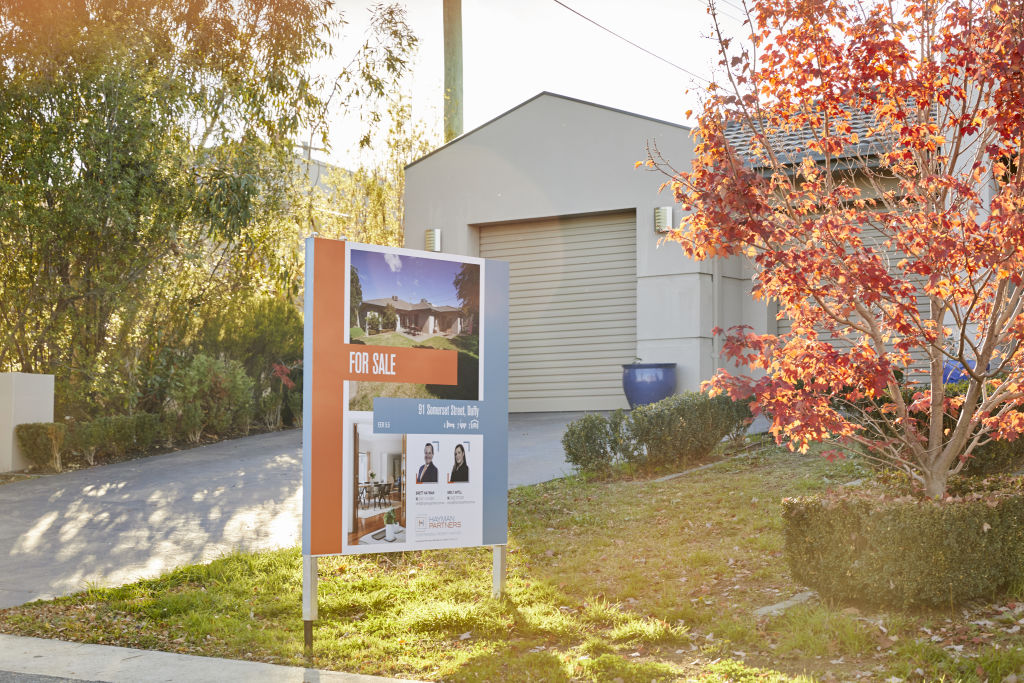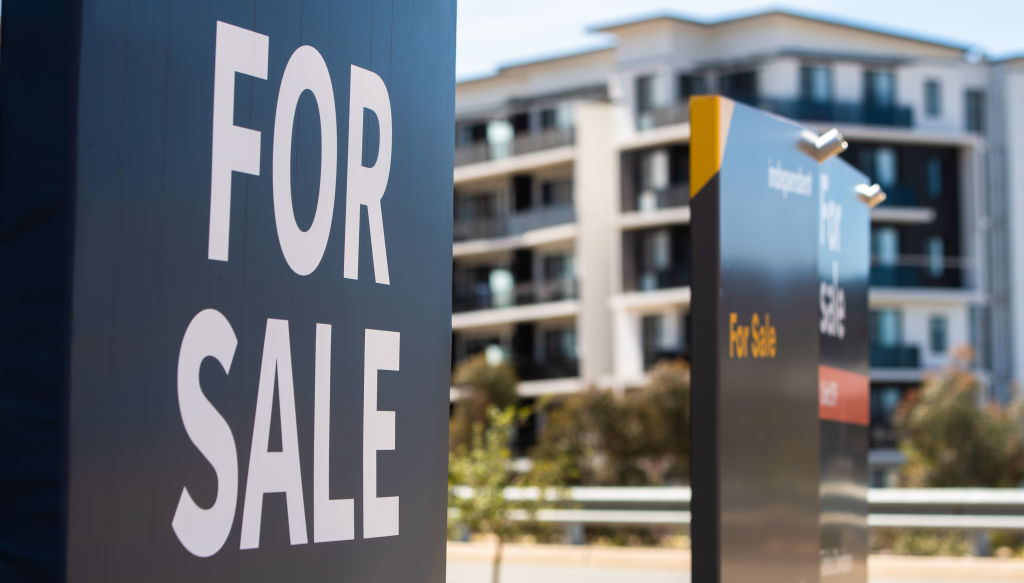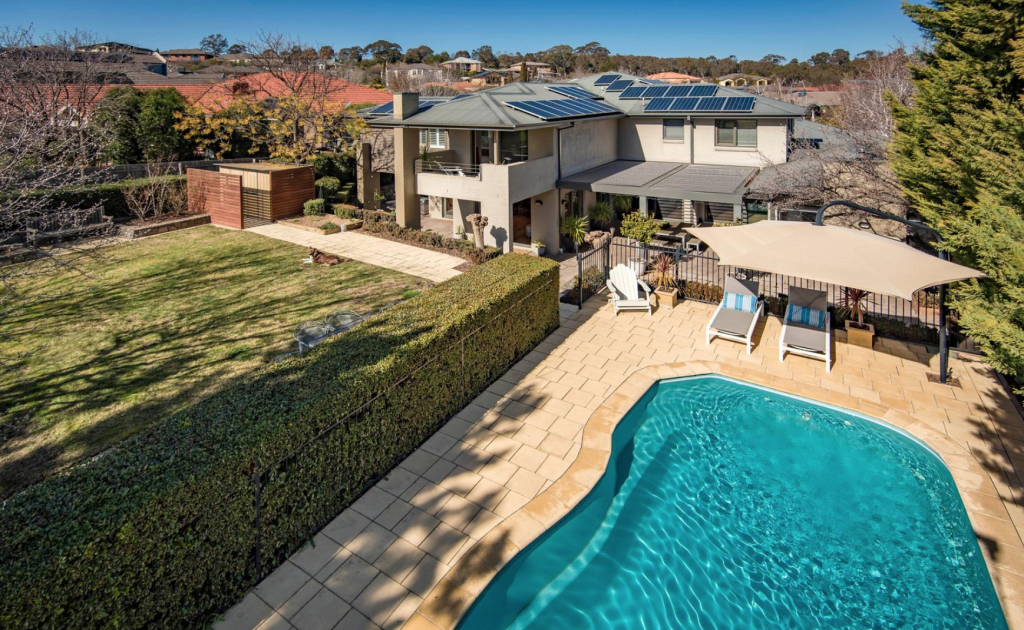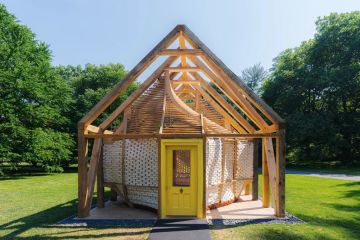Canberra house price growth outpaces wage growth, data shows

Canberra’s house prices have outperformed wage growth in the last financial year and the June 2020 quarter, new analysis shows.
They finished the financial year 9.3 per cent higher than the previous year, on Domain data.
But hourly wages rose only 2 per cent in the same period, ABS figures show.
This left house price growth outperforming wage growth by 7.3 percentage points.
All but two of Australia’s capital cities followed a similar pattern, with house price growth largely outstripping wage growth in the last year.
House price growth surplus or deficit, year to June
Positive: Indicates stronger house price growth than wage growth
Negative: Indicates wage growth exceeds house price growth
| House price growth | State | Wage growth | Surplus/deficit | |
| Sydney | 10.5% | NSW | 1.8% | 8.7% |
| Melbourne | 6.9% | VIC | 1.8% | 5.1% |
| Brisbane | 2.4% | QLD | 1.7% | 0.7% |
| Adelaide | 3.0% | SA | 2.5% | 0.5% |
| Perth | -1.4% | WA | 1.7% | -3.1% |
| Hobart | 10.0% | TAS | 2.4% | 7.6% |
| Darwin | -0.1% | NT | 2.3% | -2.4% |
| Canberra | 9.3% | ACT | 2.0% | 7.3% |
| National | 6.6% | Australia | 1.7% | 4.9% |
Source: ABS, Domain
The trend continued in Canberra during the pandemic-hit June quarter.
Canberra house prices increased by 4.1 per cent in the three months to June, compared to the June quarter 2019, with wages increasing slightly by 0.2 per cent, meaning houses outpaced wage growth by 3.9 percentage points.
The national capital was unusual in this regard. Hobart joined Canberra as one of the only two cities where house prices outperformed wages in the last quarter, with other capital cities reversing the trend in the final months of the financial year.
House price growth surplus or deficit, June quarter
Positive: Indicates stronger house price growth than wage growth
Negative: Indicates wage growth exceeds house price growth
| City | House price growth | State | Wage growth | Surplus/deficit |
| Sydney | -2.0% | NSW | 0.0% | -2.0% |
| Melbourne | -3.5% | VIC | -0.1% | -3.4% |
| Brisbane | -1.4% | QLD | 0.0% | -1.4% |
| Adelaide | 0.2% | SA | 0.4% | -0.2% |
| Perth | -1.5% | WA | 0.2% | -1.7% |
| Hobart | 1.4% | TAS | 0.3% | 1.1% |
| Darwin | -1.0% | NT | 0.1% | -1.1% |
| Canberra | 4.1% | ACT | 0.2% | 3.9% |
| National | -2.0% | Australia | 0.0% | -2.0% |
Source: ABS, Domain
“We’ve seen a different dynamic unravel across our housing market, particularly when COVID-19 hit, which saw many of our house prices record negative growth,” said Domain senior research analyst Dr Nicola Powell.
“There’s a number of cities that fall under this category, except for Canberra and Hobart – making home ownership harder to reach for many buyers, particularly first-home buyers.”
Dr Powell expects Canberra’s house price growth to continue at a steady pace.
“The capital is a standout performer and will continue to be, but the level of price growth will be minor compared to what we’ve seen and it may even get to a point where it will just flatline for a period of time,” Dr Powell said.
Recent data from the Real Estate Institute of Australia’s latest Housing Affordability Report also showed the capital as the only city to see a decline in both housing and rental affordability.

St George senior economist Janu Chan attributed Canberra’s strong house price growth to its high proportion of public sector employees, which has supported employment levels in the capital.
“Canberra always tends to run on a different cycle than other capital cities and doesn’t see big price swings that might occur elsewhere like Sydney and Melbourne, for instance,” Ms Chan said.
“The ACT is not immune from the impacts of the pandemic but it is insulated in a way. Though jobs have been lost, it’s quite minimal compared to other cities.”
According to the Domain House Price Report for the June quarter, Canberra’s median house price reached a record high of $819,090.
Luke McAuliffe of Blackshaw Gungahlin said while housing affordability has declined, it’s a reflection of the strong buyer appetite pushing those prices up.

“When there were restrictions on open homes and auctions, the Canberra property market adapted very quickly to virtual platforms and so did our buyers,” Mr McAuliffe said.
“So when those restrictions lifted, we saw a great uptick in the level of activity from both buyers and sellers.”
Mr McAuliffe recently sold a property in Nicholls for $2.025 million, which set a new suburb record.
“With the low levels of stock we had in recent months, coupled with the record-low interest rates and the strong buyer demand, it has helped lift house prices,” he said.
“I’m not sure how long this pandemic will go on for and I’m not sure if Canberra will continue to weather this storm but at the moment, it looks like we’ve been doing well and I hope it continues.”
We recommend
We thought you might like
States
Capital Cities
Capital Cities - Rentals
Popular Areas
Allhomes
More









